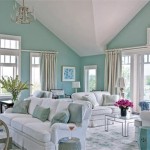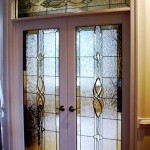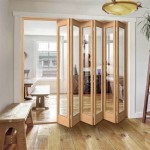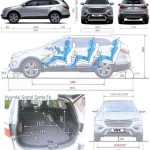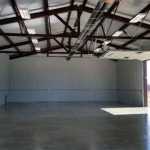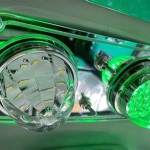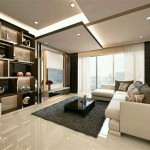Modern Interior Design: A Definition
Modern interior design, often confused with contemporary design, is a distinct style rooted in the design movement of the early to mid-20th century. It evolved from German and Scandinavian architecture and design schools like Bauhaus, emphasizing functionality, simplicity, and a rejection of the ornate and excessive detailing prevalent in earlier eras such as Victorian and Art Deco. Understanding the nuances of modern design requires examining its core principles and how they translate into specific design choices.
The modern style emerged as a response to industrialization and the changing social landscape. Designers sought to create spaces that were efficient, affordable, and reflective of the new machine age. This led to an emphasis on clean lines, open spaces, and the use of modern materials like steel, glass, and concrete. Functionality became paramount, with every element serving a specific purpose. This approach contrasted sharply with the cluttered and decorative interiors of the past, paving the way for a new aesthetic that prioritized practicality and visual clarity.
Key Elements of Modern Interior Design
Several key elements define modern interior design and distinguish it from other styles. These elements work in harmony to create a cohesive and visually appealing space that embodies the principles of simplicity and functionality.
1. Minimalism and Clean Lines: One of the most defining characteristics of modern interior design is its commitment to minimalism. This means avoiding clutter and unnecessary ornamentation. Furniture pieces are typically simple in shape, with smooth surfaces and a lack of intricate detailing. Lines are clean and defined, creating a sense of order and visual clarity. Walls are often painted in neutral colors, providing a blank canvas for the other elements of the design to stand out. Accessories are kept to a minimum, chosen carefully for their functionality and aesthetic appeal. The overall effect is a space that feels uncluttered, spacious, and serene.
The emphasis on clean lines extends to all aspects of the design, from the architecture of the building to the selection of furniture and accessories. This creates a sense of visual unity and coherence, making the space feel harmonious and balanced. The absence of excessive ornamentation allows the natural beauty of the materials to shine through, highlighting the inherent qualities of wood, metal, and glass.
2. Natural Materials and Neutral Palette: Modern interior design favors the use of natural materials such as wood, leather, stone, and cotton. These materials are often left in their natural state, showcasing their texture and grain. Wood, in particular, is a popular choice for flooring, furniture, and wall paneling, adding warmth and character to the space. Leather upholstery is another common element, providing a touch of luxury and durability. Stone, whether used for countertops, fireplaces, or accent walls, adds a sense of permanence and grounding.
The color palette in modern interior design typically consists of neutral tones such as white, beige, gray, and black. These colors create a sense of calm and sophistication, allowing the natural materials to take center stage. Pops of color can be introduced through artwork, accessories, or accent furniture, but these are usually used sparingly to avoid overwhelming the space. The use of neutral colors also helps to maximize the amount of natural light in the room, creating a bright and airy atmosphere. Textural variations are key to adding depth and visual interest within the neutral palette. Think woven fabrics, textured rugs, and exposed brick to prevent the space from feeling flat or sterile.
3. Open Floor Plans and Functional Furniture: Open floor plans are another hallmark of modern interior design. This means that the living room, dining room, and kitchen are often combined into one large, open space. This creates a sense of spaciousness and encourages interaction between family members. Open floor plans also allow for better flow of natural light, making the space feel brighter and more inviting.
Furniture in modern interior design is typically functional and purposeful. Pieces are chosen for their usability and comfort, as well as their aesthetic appeal. Multifunctional furniture, such as sofa beds or coffee tables with storage, are popular choices, as they help to maximize space and minimize clutter. Furniture is often arranged to create conversation areas and to facilitate movement throughout the space. The focus is on creating a comfortable and practical environment that meets the needs of the occupants.
Another vital aspect of functional furniture in modern design is its ergonomic design. It is designed to provide maximum comfort and support, promoting good posture and reducing strain on the body. This is especially important for furniture that is used for extended periods, such as office chairs and sofas. The emphasis on functionality and ergonomics ensures that the furniture not only looks good but also contributes to the overall well-being of the occupants.
Distinguishing Modern from Contemporary Design
While often used interchangeably, modern and contemporary design are distinct styles. Modern design, as previously discussed, refers to a specific period in design history, roughly from the early to mid-20th century. Contemporary design, on the other hand, refers to the style that is currently popular. This means that contemporary design is constantly evolving and changing, reflecting the current trends and innovations in the design world.
One of the key differences between modern and contemporary design is the use of color. Modern design typically features a neutral color palette, while contemporary design may incorporate bolder and more vibrant colors. Contemporary design also tends to be more experimental and playful, incorporating unexpected materials and textures. Modern design, in contrast, is more restrained and focused on simplicity and functionality. While contemporary design can incorporate elements of modern design, it is not strictly bound by the principles of the modern movement.
Another important distinction lies in the use of technology. Contemporary design often embraces the latest technological innovations, integrating smart home features and cutting-edge appliances. Modern design, while not averse to technology, tends to focus more on the timeless principles of simplicity and functionality. The integration of technology in modern spaces is usually subtle and unobtrusive, blending seamlessly with the overall design aesthetic.
The Enduring Appeal of Modern Interior Design
The enduring appeal of modern interior design lies in its timelessness and adaptability. The principles of simplicity, functionality, and clean lines are as relevant today as they were in the mid-20th century. Modern design can be adapted to suit a variety of spaces and lifestyles, making it a popular choice for both residential and commercial interiors. The focus on natural materials and neutral colors creates a sense of calm and serenity, providing a welcome respite from the stresses of modern life.
Furthermore, modern interior design is inherently sustainable. The emphasis on durable materials and timeless design ensures that the furniture and decor will last for many years, reducing the need for frequent replacements. The focus on functionality and efficiency also helps to minimize waste and conserve resources. By embracing the principles of modern design, individuals can create spaces that are not only beautiful and functional but also environmentally responsible.
The influence of modern interior design can be seen in many contemporary design styles, demonstrating its lasting impact on the design world. Its emphasis on simplicity and functionality has shaped the way we think about interior spaces, inspiring designers to create environments that are both aesthetically pleasing and practical. The principles of modern design continue to resonate with individuals who appreciate clean lines, natural materials, and a sense of simplicity in their surroundings.
In conclusion, modern interior design is more than just a style; it is a philosophy that emphasizes functionality, simplicity, and a connection to the natural world. Its enduring appeal lies in its ability to create spaces that are both beautiful and practical, providing a comfortable and inspiring environment for modern living. Understanding the key elements of modern design allows individuals to create spaces that reflect their own personal style while adhering to the principles of this timeless aesthetic.

Contemporary Vs Modern Interior Design Everything To Know Décor Aid

Contemporary Design Style And The Essentials To Master It Décor Aid

Modern Vs Contemporary Interior Design Style Your Go To Guide At Home

5 Key Elements That Define Contemporary Interior Design Avaato Miami Based Firm

What Is Modern Design Everything You Need To Know About

Difference Between Modern Vs Contemporary Interior Design

Interior Design Styles 101 The Ultimate Guide To Decorating In 2024 Decorilla

Modern Design Vs Contemporary Difference Between And Styles

What Is Modern Design Everything You Need To Know About

Contemporary Design Style And The Essentials To Master It Décor Aid
Related Posts

